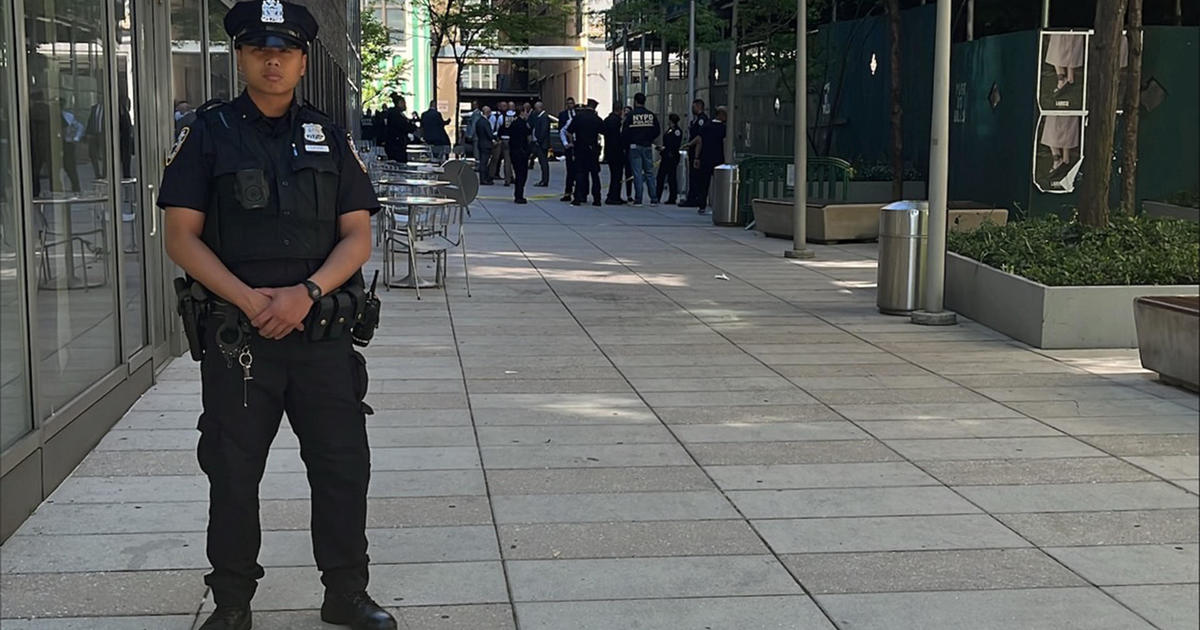Dead Heat In Race For Connecticut Governor
STAMFORD, CT (AP / WCBS 880) - Dannel Malloy navigates his SUV through the streets of Stamford, offering a nearly nonstop narrative of the successes he says transformed the city while he was mayor for 14 years.
LISTEN: WCBS 880 Connecticut Bureau Chief Fran Schneidau on the latest poll numbers
Podcast
LISTEN: WCBS 880's Paul Murnane on political advertising gone extreme
Podcast
Block after block, the Democratic nominee for governor points to the triumphs: the 34-story Trump Parc residence tower, the North American headquarters of the Royal Bank of Scotland, one of the first urban Target stores in the country, the expanded train station and the huge South End redevelopment, where old mill properties are being replaced with apartments, businesses and parks with $3 billion in private money.
Asked if he's proud, he says in his typical confident tone, "Yeah, wouldn't you be? There's no other city in the region that has the level of investment, ongoing as we speak, in the midst of the greatest recession since the Great Depression.''
Malloy was mayor from 1995 to 2009, as the city was changing from a declining mill town to a financial center. The 55-year-old former prosecutor said the problems he faced as mayor are similar to the ones facing the state now, including a need for more jobs.
His critics tell a different story, however. His Republican rival, Tom Foley, and GOP leaders in Stamford say Malloy has exaggerated his accomplishments and the city is worse off in many ways after his tenure, especially in terms of job losses, higher taxes and debt.
Malloy, Foley and independent candidate Tom Marsh are vying to succeed retiring Republican Gov. M. Jodi Rell. Malloy also ran for governor in 2006, but lost the Democratic primary to New Haven Mayor John DeStefano, who lost the general election to Rell. Connecticut hasn't had a Democratic governor since William O'Neill, who left office in 1991.
Malloy insists he created a business environment in Stamford that led to at least 5,000 new jobs, and he would do the same on a statewide level. He also touts a 60 percent drop in crime and improved schools under his watch as mayor.
Foley, a Greenwich businessman and former U.S. ambassador to Ireland, points to state Department of Labor data that show Stamford lost nearly 14,000 jobs overall between 2000 and 2009. He also cites state test scores showing Stamford schools having some of the highest achievement gaps between low-income and higher-income students, when compared with other cities. But Malloy says the gap has been narrowing in recent years.
Foley and city Republican leaders accuse Malloy of presenting numbers only in a light favorable to him.
"It's fuzzy math,'' said Bob Kolenberg, the Republican vice chairman of the city's Board of Finance who's running for state Senate.
Kolenberg said financial companies chose to relocate to Stamford not because of Malloy, but because the city of 117,000 people is only about 25 miles from New York City and the state offered tax incentives.
"Whether Dan Malloy was mayor or not, those companies were coming to Stamford anyway,'' Kolenberg said.
Malloy scoffs at the accusations. On the roof of a South End office building for a photo shoot, he looks out at a panoramic view that includes new office buildings and busy construction sites.
"You get the picture?'' he asks. "We're an old, tired industrial state that lost our way, just like Stamford was an old and tired industrial city that lost its way. We found our way, and I think Connecticut can, too.''
Malloy's tenure in Stamford, Kolenberg said, included a near doubling of property taxes and an increase in the city's debt from $150 million to nearly $500 million.
Added Chris Munger, chairman of the Stamford Republican Town Committee, "Taxes have gone way up under Malloy's 14 years in office. We have a high office vacancy rate and we have lost a significant amount of jobs during his time in office.''
There were about 75,400 jobs in Stamford in 1995, and Malloy says the number never dipped below that figure until after the recession hit in 2007. Jobs dropped to about 73,900 in 2008 and about 69,300 in 2009, according to the Labor Department.
Malloy's campaign said the average annual tax increase was less than the rate of inflation during his tenure, property values jumped 683 percent and the amount of taxable property increased. He said he cut non-education city jobs by 8 percent and improved government efficiency.
City records show Stamford collected $235 million in property taxes in 1998 and $386 million in 2009. Malloy's campaign said a major share of the new tax receipts came from new businesses and additional residents as the city's population grew.
Bernard Levy, a city resident for four decades, said his property taxes have gone up over the years, but he believes Stamford residents pay much lower taxes than people in other cities.
"I think the city has fared well,'' said the 71-year-old retired computer programmer, who supports Malloy. "I believe he did a very good job. He's been an accessible mayor.''
Maureen Boylan, a member of a local taxpayer group, disagrees. She's posted a 15-minute YouTube video criticizing Malloy for high taxes and ill-conceived and unfinished construction projects, among other things.
"He's taxed so high, he's taxed the senior citizens ... right out of town because they can't afford to live here,'' Boylan says in the video. "He is not the man you think he is.''
Malloy has not ruled out tax increases as he runs for governor to help the state reduce next year's projected $3.3 billion deficit. He also plans an undetermined amount of cost reductions.
Munger and Kolenberg also said Stamford became a "pay-to-play'' city under Malloy, where people benefiting from city contracts donated to Malloy's campaign.
Campaign finance records do show that people with connections to city contracts have donated to Malloy's campaign for governor, but Malloy aide Roy Occhiogrosso said the former mayor has complied with all laws and ethics rules and he helped implement a model ethics code.
"Republicans are trying out the same old tired attacks that have been proven false in the past,'' Occhiogrosso said.
Malloy did face some heat in 2004 and 2005, when the chief state's attorney's office investigated whether city contractors received preferential treatment in return for doing work on Malloy's house. The allegations were similar to those that resulted in convictions and jail time for former Gov. John Rowland and former Bridgeport Mayor Joe Ganim.
But Malloy was cleared of any wrongdoing. He supplied investigators with more than $500,000 in checks to show he paid for the home renovations.
Despite all the claims and counterclaims, Malloy said being mayor prepared him well to be the next governor.
"I've done the job,'' Malloy said. "I ran a half-billion-dollar corporation for 14 years, did it successfully, lowered crime, built housing, redeveloped old urban areas, redeveloped old manufacturing areas, had a AAA bond rating, invested in infrastructure, improved education. So what part of the job of being governor haven't I done yet?''
(Copyright 2010 by The Associated Press. All Rights Reserved.)



